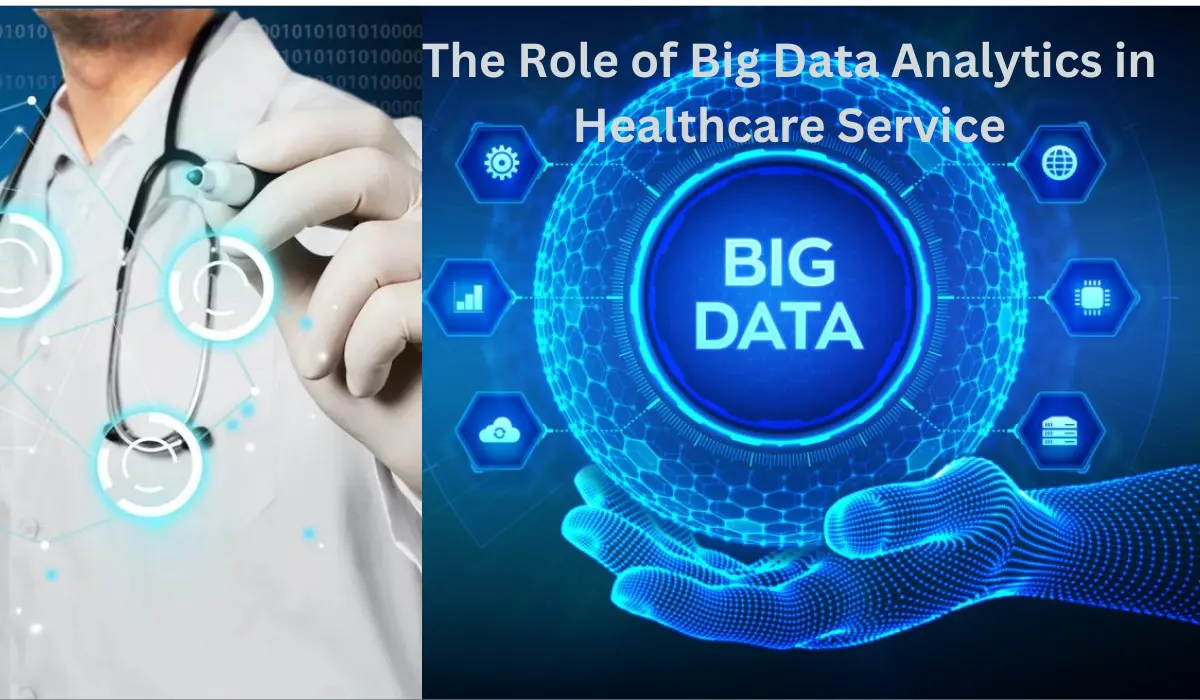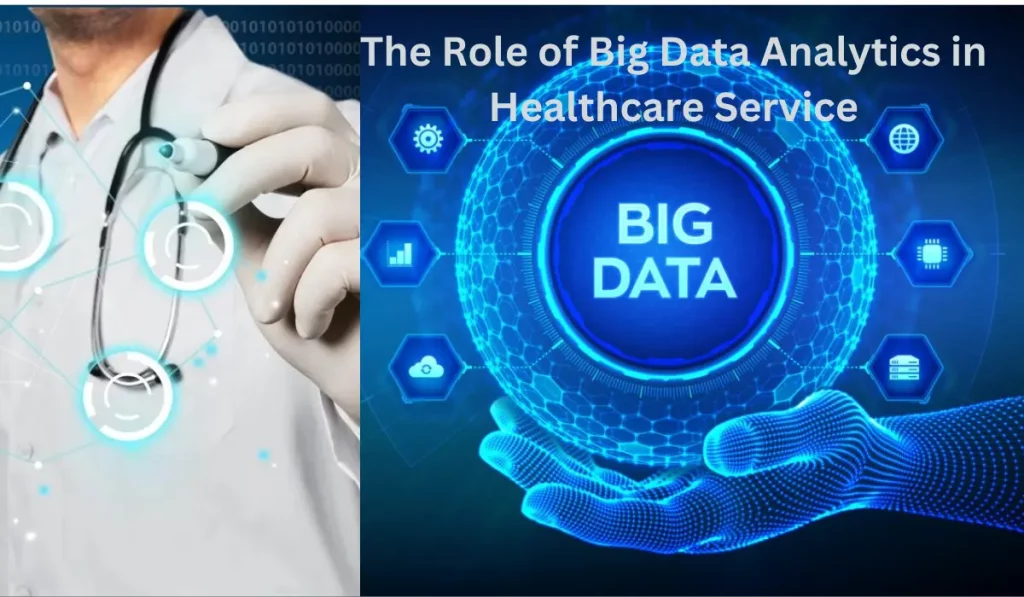Big data refers to extremely large and complex datasets. You can’t easily manage, process, or analyze using traditional data processing techniques or tools. These datasets typically exceed the capacity of conventional databases and software tools to capture, store, manage, and analyze the information within a reasonable timeframe. In this context, our focus is on the role of big data analytics in healthcare service.
Let’s jump into the deep:
Characteristics of Big Data
Big data represents a significant opportunity for organizations to gain valuable insights, improve decision-making processes, and unlock new opportunities for innovation and competitive advantage. However, it also presents challenges related to data management, storage, analysis, privacy, security, and ethical considerations.
There are three dimensions in big data. We know it as three Vs:
Volume: Big data involves large volumes of data, often ranging from terabytes to petabytes and beyond. This includes massive amounts of structured, semi-structured, and unstructured data generated from various sources such as sensors, social media platforms, transaction records, and multimedia content.
Velocity: Big data is generated at high velocity or speed, often in real-time or near-real-time. This continuous influx of data requires rapid processing and analysis to derive meaningful insights and actionable information promptly.
Variety: Big data encompasses diverse types and formats of data, including structured data (e.g., databases, spreadsheets), semi-structured data (e.g., XML, JSON), and unstructured data (e.g., text documents, images, videos). This variety of data sources presents challenges in terms of integration, storage, and analysis.
In addition to the three Vs, there are often extensions such as:
Variability: Refers to the inconsistency in the data flow, which may vary over time or exhibit unpredictable patterns.
Veracity: Denotes the quality or reliability of the data, including issues such as accuracy, consistency, and trustworthiness.
Value: Emphasizes the importance of extracting actionable insights and value from big data to drive informed decision-making and innovation.
How Big Data Analytics Work
Big data analytics involves the process of examining large and complex datasets to uncover hidden patterns, correlations, trends, and other valuable insights that can inform decision-making and drive business outcomes. Here’s an overview of how big data analytics works:
Data Collection:
The process begins with the collection of data from various sources, including transactional systems, social media platforms, sensors, mobile devices, and more. This data can be structured, semi-structured, or unstructured.
Data Storage:
Once collected, the data is stored in a centralized repository, often referred to as a data lake or data warehouse. These storage systems are designed to handle large volumes of data and support various data formats.
Data Preparation:
Before analysis can take place, the raw data needs to be cleaned, transformed, and prepared for analysis. This involves tasks such as removing duplicates, handling missing values, standardizing formats, and integrating data from different sources.
Data Processing:
We use specialized big data processing frameworks and tools for processing and preparing data. Apache Hadoop, Apache Spark, or cloud-based services like Amazon EMR or Google BigQuery are examples of big data processing tools. These tools help to enable and distribute computing, where computations can be performed across multiple nodes or clusters simultaneously.
Analysis and Modeling:
Various analytical techniques and algorithms can uncover patterns, correlations, trends, and insights within the data with the processed and prepared data. This may involve descriptive analytics to summarize the data, diagnostic analytics to understand why certain events occur, predictive analytics to forecast future outcomes, or prescriptive analytics to recommend actions based on insights.
Visualization and Interpretation:
Healthcare professionals often visualize the insights derived from the analysis using charts, graphs, dashboards, or other visualizations to make them easier to understand and interpret. They commonly use visualization tools such as Tableau, Power BI, or matplotlib in Python for this purpose.
Insights and Decision-Making:
The insights gained from the analysis finally inform decision-making processes, drive strategic initiatives, optimize operations, improve customer experiences, and identify new opportunities for innovation and growth.
Throughout this process, it’s important to consider data quality, privacy, security, and ethical considerations to ensure that the insights generated are accurate, reliable, and aligned with organizational goals and values. Additionally, big data analytics is often an iterative process, where insights lead to further data exploration and analysis, refining models and strategies over time.
Also Read
The Role of Big Data Analytics in Healthcare Service
Big data analytics plays a crucial role in transforming healthcare services in various ways, revolutionizing how healthcare providers deliver care, improve patient outcomes, and optimize operational efficiency. Here are some key roles of big data analytics in healthcare services:
Clinical Decision Support:
Big data analytics enables healthcare providers to analyze vast amounts of patient data, including electronic health records (EHRs), medical imaging, genomic data, and wearable device data, to identify patterns and trends that can aid in clinical decision-making. By leveraging predictive analytics and machine learning algorithms, clinicians can receive real-time insights and recommendations to support diagnosis, treatment planning, and patient management.
Personalized Medicine:
Big data analytics facilitates the development of personalized treatment plans tailored to individual patient characteristics, such as genetic makeup, medical history, lifestyle factors, and environmental influences. By analyzing large-scale datasets, including genomics, proteomics, and clinical outcomes, healthcare providers can identify biomarkers, predict disease risks, and prescribe targeted therapies that are most effective for each patient, leading to better treatment outcomes and reduced adverse reactions.
Population Health Management:
Big data analytics helps healthcare organizations analyze population-level data to identify at-risk patient populations, predict disease outbreaks, and implement preventive interventions. By aggregating and analyzing data from multiple sources, including EHRs, claims data, public health records, and social determinants of health, healthcare providers can stratify patient populations based on their risk profiles and proactively deliver targeted interventions to improve health outcomes and reduce healthcare costs.
Healthcare Operations Optimization:
Big data analytics allows healthcare organizations to optimize operational processes, enhance resource allocation, and improve efficiency across the care continuum. By analyzing operational data, such as patient flow, staffing levels, equipment utilization, and supply chain management, healthcare administrators can identify bottlenecks, streamline workflows, and allocate resources more effectively to ensure timely access to care and enhance patient satisfaction.
Fraud Detection and Prevention:
Big data analytics helps healthcare payers and providers detect and prevent fraud, waste, and abuse within the healthcare system. By analyzing claims data, billing patterns, and clinical documentation, healthcare organizations can identify suspicious activities, anomalies, and outliers that may indicate fraudulent behavior or improper payments. Advanced analytics techniques, such as anomaly detection and network analysis, enable healthcare organizations to mitigate financial losses and ensure compliance with regulatory requirements.
Real-Time Monitoring and Surveillance:
Big data analytics enables real-time monitoring and surveillance of public health trends, infectious disease outbreaks, and adverse events. By analyzing data from sources such as syndromic surveillance systems, social media, and environmental sensors, public health agencies can detect early warning signs of emerging threats, monitor disease spread, and implement timely interventions to mitigate the impact of health crises.
End Words
Big data analytics holds tremendous potential to transform healthcare services by enabling data-driven decision-making, enhancing clinical outcomes, improving population health, and optimizing healthcare delivery processes. However, to fully realize these benefits, healthcare organizations must address challenges related to data interoperability, data quality, privacy, security, and regulatory compliance. We hope this article will help you to understand the role of big data analytics in healthcare service.





